
This is a list of sites in Minnesota which are included in the National Register of Historic Places. There are more than 1,700 properties and historic districts listed on the NRHP; each of Minnesota's 87 counties has at least 2 listings. Twenty-two sites are also National Historic Landmarks.

The Small House in Macon, Georgia, also known as Ralph Small House,Napier-Small House, or McMullan-Napier-Small House, is a "distinguished" example of high-style Greek Revival architecture that was built in 1846 by Skelton Napier.
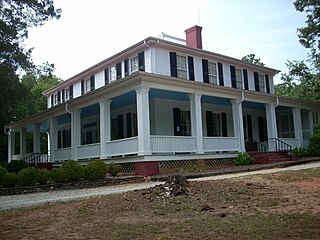
Ashtabula is a plantation house at 2725 Old Greenville Highway near Pendleton in Anderson County, South Carolina, USA. It has been also known as the Gibbes-Broyles-Latta-Pelzer House or some combination of one or more of these names. It was named in the National Register of Historic Places as a historic district on March 23, 1972. It is considered a significant example of a Lowcountry style plantation house built for a Charleston family in the Upstate in the early 19th century. It also is part of the Pendleton Historic District.

The Donovan Robeson House is a historic house in Greenville, Ohio, United States. Located along Fourth Street west of downtown, the Robeson House has been ranked as the city's most significant Queen Anne mansion.

The Alexander P. and James S. Waugh House is an historic, American home that is located in Greenville, Mercer County, Pennsylvania.
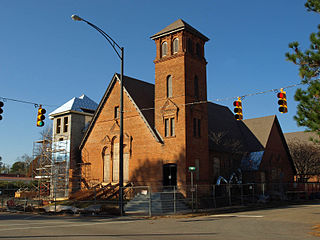
First Presbyterian Church is a historic Presbyterian church at 215 East Commerce Street in Greenville, Alabama. It was built in 1886 and added to the National Register of Historic Places in 1986. The church is a member of the Presbyterian Church in America.
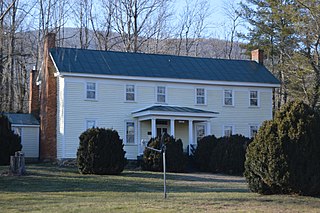
Powell–McMullan House is a historic home located near Stanardsville, Greene County, Virginia. The original house was built about 1800 and expanded in 1842. It is a two-story, frame dwelling in a vernacular Greek Revival style. It has a metal-sheathed gable roof, exterior gable-end brick chimneys, and a one-story hipped roof front porch.

The Buell–Stallings–Stewart House is a historic residence in Greenville, Alabama. The house was built in 1874 by a local lawyer David Buell, who later sold it to U. S. Congressman Jesse F. Stallings. Stallings sold the house to A. Graham Stewart, a local merchant, in 1901. The house is built in a Carpenter Gothic style, rare in Alabama, and features a steeply sloped roof and several sharply pointed gables and dormers. A flat-roofed, octagonal porch projects over the front entry. Each window and door is topped with a decorative Gothic arch molding with a diamond in the middle. The house was listed on the National Register of Historic Places in 1986.

The Lanneau-Norwood House is a historic, late 19th-century house on Belmont Avenue in Greenville, South Carolina. The house is an outstanding example of Second Empire architecture in the American South and is one of the last surviving Victorian-era homes in Greenville. The property was added to the National Register of Historic Places in 1982.

The United States Post Office, also known as the Federal Building, is a historic post office building located at Greenville, Pitt County, North Carolina. It was designed by the Office of the Supervising Architect under the direction of Oscar Wenderoth and built in 1913–1914. It is a two-story, five-bay, Florintine Renaissance style stuccoed brick building on a limestone base. It has a low hip roof of terra cotta tile with overhanging eaves. The front facade features a three-bay loggia formed by arches with voluted keystones, springing from Tuscan order columns. This building served as the main post office for Greenville until 1969. It currently serves as a U.S. Courthouse.

The W. S. Blackwell House is a historic residence located at 211 Ft. Dale Street in Greenville, Alabama. The house was built around 1930, on land previously occupied by W. S. Blackwell's father-in-law's house, which burned in the 1920s.

The Commerce Street Residential Historic District is a historic district in Greenville, Alabama. The district consists of four houses along Commerce Street, constructed between 1846 and 1895. They represent the final and last remaining residential construction on the town's main street.

Confederate Park is a park in Greenville, Alabama. The park was established in 1902 in front of the First Methodist Church on 1 acre of land donated by the church to the United Daughters of the Confederacy. The following year, the UDC commissioned a 16-foot (4.8-m) marble statue of a Confederate soldier on a pedestal. In the following years, many shrubs and shade trees were planted, and in 1909 a fountain was donated by Mayor Claude E. Hamilton, and was placed in the center of the park. Sidewalks along Commerce Street and diagonal walkways through the park, as well as several benches, were also placed. In the 1920s, a landscape architect was hired to place flowers and evergreens. In 1937, the city hall was built across Commerce Street from the park.
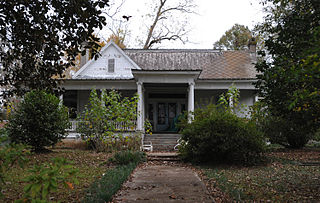
The Dickenson House is a historic residence in Greenville, Alabama. The house is an example of South Alabama vernacular architecture, with a truncated pyramidal roof topped with a flat platform. The house has a wrap-around front porch supported by Ionic columns. A cross-gable dormer with a vent adorns the left side of the façade. The main entry has Eastlake detailing, a transom, and sidelights. The interior features Queen Anne details including horizontally-paneled doors and paneled wainscoting.

The East Commerce Street Historic District is a historic district in Greenville, Alabama. The district contains Greenville's oldest commercial buildings, as well as the Butler County Courthouse. The first courthouse on the site was built in 1822; the current, fourth, courthouse was completed in 1903. The commercial buildings date from the 1880s through 1928 and are primarily vernacular brick structures. A fire in 1927 destroyed many buildings along Commerce Street. A National Guard Armory was built south of the courthouse, on Conecuh Street, by the Works Progress Administration in 1936.
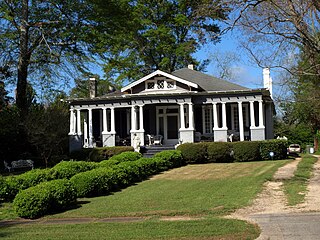
The Fort Dale-College Street Historic District is a historic district in Greenville, Alabama. The district contains Greenville's oldest existing affluent residences, dating to as early as the 1850s. In the initial federal land sale following the Creek War, the area that became northwest Greenville was claimed by William Dunklin. Dunklin sold the claim to William Burnette, who began to parcel the land for sale and to give to family members. Burnette's daughter and son-in-law built a Corinthian-columned Greek Revival home in 1857. A few other pre-Civil War houses remain, and construction continued after the war, including a school building that was later converted into a house. Most of the early residences were large, and built in Greek Revival, Second Empire, and Colonial Revival styles. Beginning in the 20th century, bungalows and cottages on smaller lots began to emerge. One of the later constructions in the district is a Spanish Colonial Revival house, built in 1928.
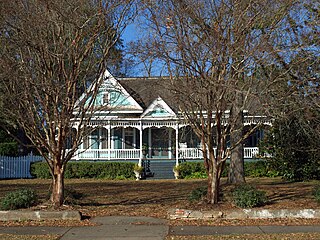
The Gaston-Perdue House is a historic residence in Greenville, Alabama. The house was built in 1895 by Butler County probate judge Zell Gaston. In 1903, following his term, Gaston moved to Birmingham and sold the house to physician J. L. Perdue.
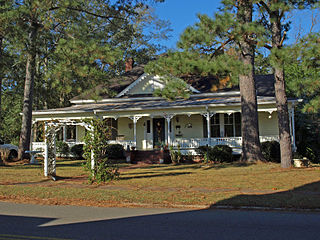
The Graydon House is a historic residence in Greenville, Alabama. The house was built in 1909, and typifies the southern Alabama vernacular house, with a hip roof and wrap-around porch. A gabled dormer is centered on the façade, and the porch has slender columns with elaborate brackets. Decorative woodwork continues inside, including Queen Anne fireplace mantels.






















